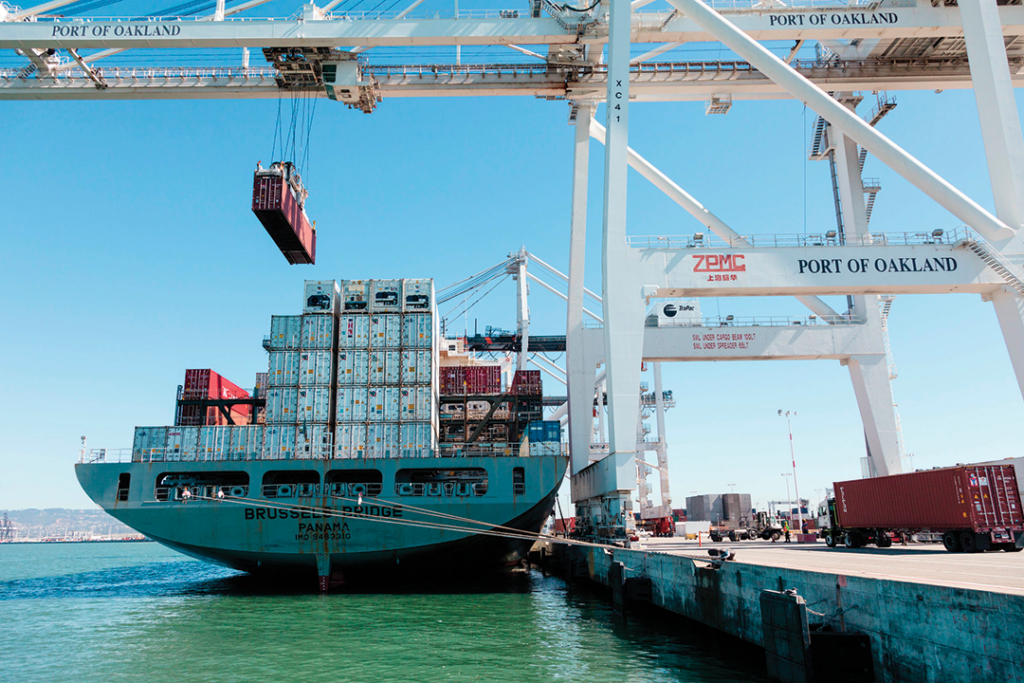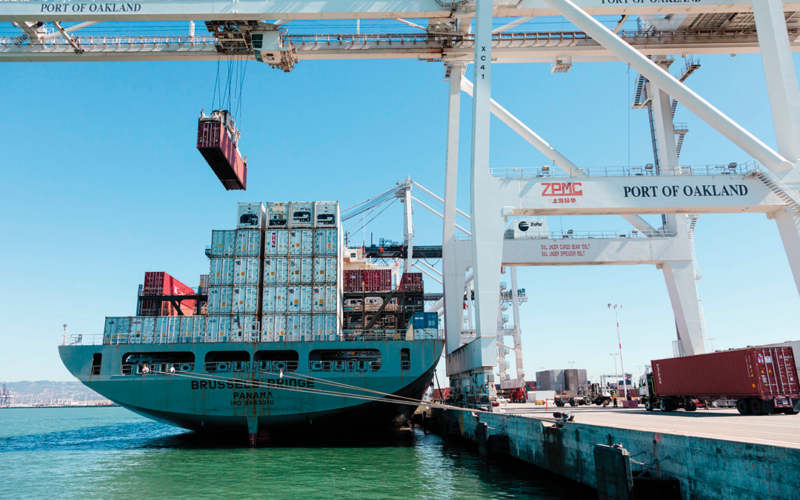(WASHINGTON) — The Environmental Protection Agency (EPA) on Wednesday announced the launch of the $3 billion Clean Ports Program to fund zero-emission port equipment and infrastructure to tackle the climate crisis and improve air quality at U.S. ports.
The funding opportunities were created under the Inflation Reduction Act – the largest climate investment in history – and will advance environmental justice by reducing diesel pollution from U.S. ports in surrounding communities, while creating good-paying jobs. EPA Administrator Michael Regan made the announcement at an event in Wilmington, N.C., with Gov. Roy Cooper as part of the Biden-Harris administration’s Investing in America tour.
The Clean Ports Program will help advance environmental justice and the Justice40 Initiative, which sets the goal that 40 percent of the overall benefits of certain federal investments in climate, clean energy and other areas flow to disadvantaged communities that are marginalized by underinvestment and overburdened by pollution.

The Clean Ports Program is designed to help ports across the country transition to fully zero-emissions operations – serving as a catalyst for transformational change across the freight sector. To achieve this, the EPA is releasing two separate notice of funding opportunities (NOFOs) as part of the $3 billion.
The nearly $2.8 billion Zero-Emission Technology Deployment Competition will directly fund zero-emission port equipment and infrastructure to reduce mobile source emissions at U.S. ports. Eligible uses of funding include human-operated and maintained zero-emission cargo handling equipment, harbor craft and other vessels, electric charging and hydrogen fueling infrastructure, and a number of other technology investments. Applications under this competition will be evaluated under multiple tiers in order to ensure that funds are distributed across ports of different sizes and types, and to ensure funding for ports serving tribal communities.
The approximately $150 million Climate and Air Quality Planning Competition will fund climate and air quality planning activities at U.S. ports – including emissions inventories, strategy analysis, community engagement and resiliency measure identification. Together, these opportunities will advance next-generation, clean technologies that will more safely and efficiently drive the movement of goods and passengers at our nation’s ports, a critical part of America’s supply chain infrastructure while reducing pollution and advancing environmental justice.
The funding for the two grant competitions is available to port authorities; state, regional, local or tribal agencies that have jurisdiction over a port authority or port; air pollution control agencies; and private entities that apply in partnership with an eligible entity above, and that own, operate or use facilities, cargo-handling equipment, transportation equipment or related technology of a port. The funding can be used for projects at water ports (coastal and inland) as well as projects at facilities where goods are transferred between rail cars and trucks (dry ports).
Ports are the transportation and commerce hubs that make the U.S. economy hum. In this global economy, efficient and effective ports are central to economic viability and prosperity. At the same time, they are places where large concentrations of diesel equipment converge – including ships, trucks, rail and non-road machinery. These diesel engines, particularly older engines found in many ports, operate near where people live, work, and play, emitting air pollution that can harm human health and contribute to climate change.
This historic investment in clean technologies at ports that reduce exposure to air pollution will protect public health, particularly for communities surrounding ports. The Clean Ports Program will also help to ensure that meaningful community engagement and emissions reduction planning are port industry standard practices.
The Clean Ports Program is one of several complementary programs funded by the Inflation Reduction Act and Bipartisan Infrastructure Law that can help reduce emissions at ports, including the Department of Transportation’s Port Infrastructure Development Program, which will be releasing a NOFO shortly. Click here to view a new interagency webpage summarizing federal funding opportunities for low- to zero-emission port technologies.
In addition to protecting human health and the environment, the program will create new jobs in the domestic clean energy sector and enhance U.S. economic competitiveness, through innovation, installation, maintenance and operation of zero-emissions equipment and infrastructure. The program’s historic investment in zero-emission port technology will promote and ensure the U.S. position as a global leader in clean technologies.
The deadline to apply for the two Clean Ports Program NOFOs is May 28. Eligible applicants can apply for funding through one or both NOFOs:
Zero-Emission Technology Deployment Competition
Climate and Air Quality Planning Competition
– Environmental Protection Agency

